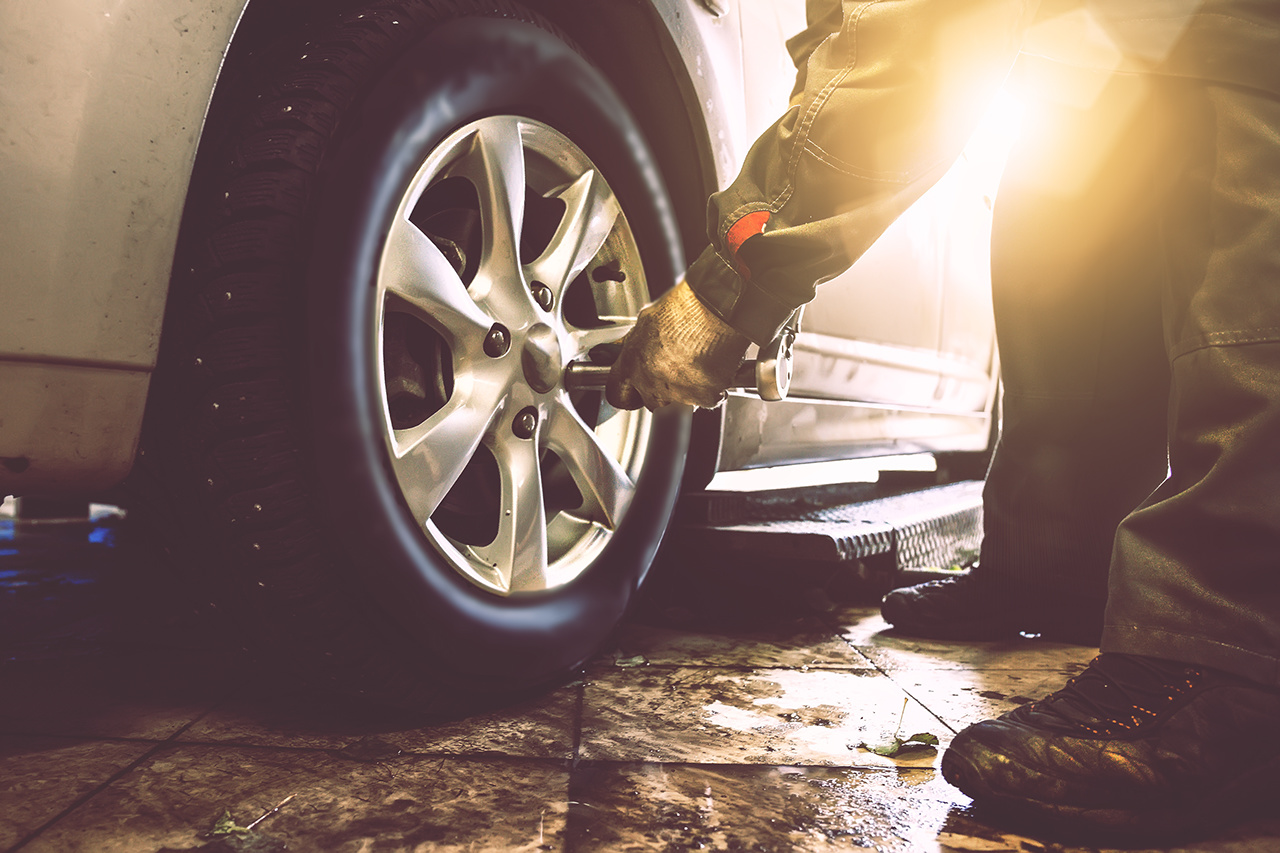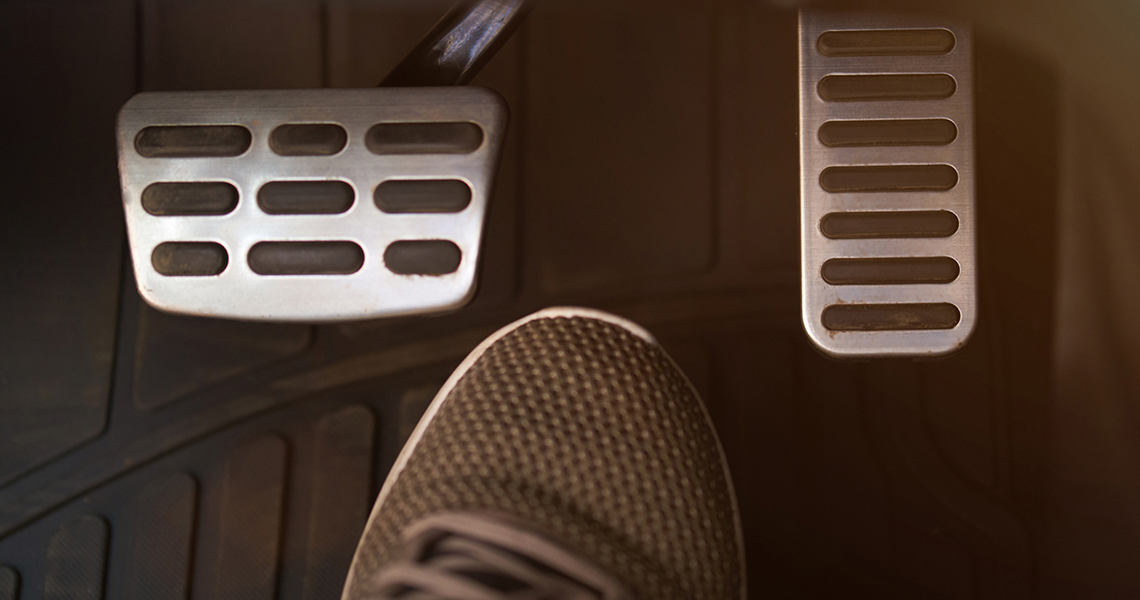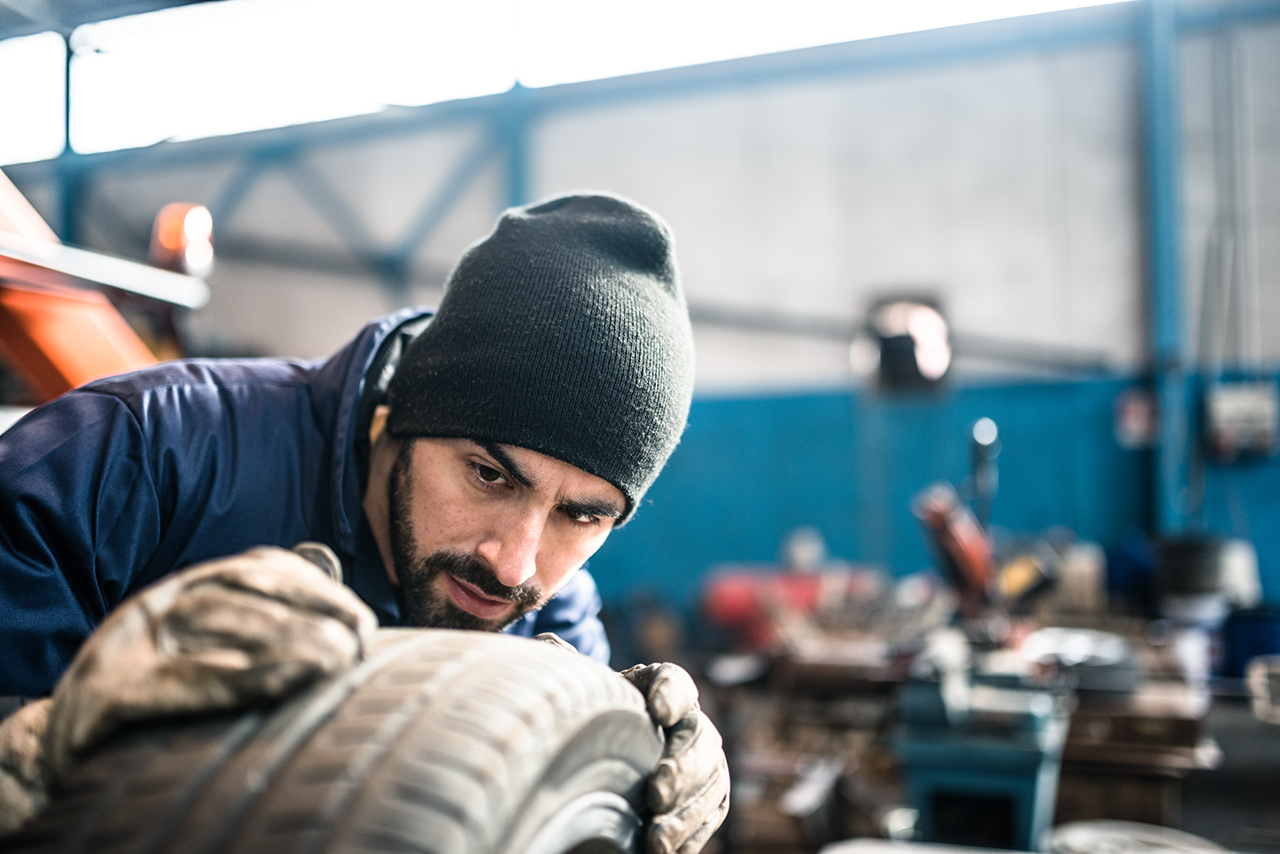
# Tyre Change and Fitting
Breaking in new tyres
What you need to know about driving with new tyres
New tyres take a little bit of gentle running in. Discover why – and how to drive on new tyres to optimise performance and safety.
Just driven a new car off the forecourt? Or perhaps you’ve got new tyres, fresh off the manufacturing line, to replace your well-worn set?
Before you hit the accelerator to see what those new tyres can do, there’s something you should know: just like a new pair of shoes, new tyres need to go through a running-in period before they can drive at their best. Discover why and follow our tips to help safely ready your new tyres for long-term service.
What’s different about new tyres?
There are a number of factors that will make your new tyres perform a little differently to your older ones.
Lubricants. During manufacturing, a release lubricant is used to help remove tyres from their mould. This substance remains on the tread until it wears off on the road. Before it has completely worn off, it could reduce your traction.
Antioxidants. These are applied to help keep the tyre rubber from breaking down when exposed to environmental factors such as fluctuating temperatures and oxygen. They may make tyres feel slick at first.
Tread depth. New tyres will naturally feature maximum tread depth. This fresh tread is stiff, smooth, deep, and could feel like unyielding, thick cushioning between you and the road at first. This may lead to something called squirm.
What is “squirm?”
Tread squirm, or tyre squirm, is a little bit of excess movement you might feel when steering a vehicle that has recently been fitted with new tyres. This movement comes from the flexibility in the rubber between the tread surface and the carcass.
For comparison:
- Slick racing tyres – with no tread – have little to no squirm.
- Snow tyres – with deep tread – have a large amount of squirm.
Isn’t new, deep tread a good thing?
You’d think so. But actually, it works better once it has spent some time on the tarmac getting slightly roughed up. Once this has happened, tyres are able to exert their optimal gripping and handling capabilities.

How do I break in new tyres?
Focus on easy, gentle driving – smooth acceleration, braking and cornering – for the first 500 miles. This will safely prep your tyres for regular performance. After this amount of use, lubricants and other substances used in the manufacturing process will have worn off.
What to do:
- Keep to dry roads, if possible
- Drive at moderate speed
- Leave a larger gap between you and the vehicle in front, as your braking distances may be longer.
What not to do:
- Accelerate sharply
- Slam on the brakes, if you can avoid it.
Lubricants used to mount the tyre to the wheel could cause some tyre/rim slip if you floor it or slam on the brakes – so avoiding doing either of those things for the first few hundred miles is particularly important.
An adjustment period for tyres – and drivers
Even if you’ve refitted your car with the same brand and model of tyres you previously had, you might notice a difference in how driving feels. It’s likely your old tyres had very little tread depth by the time you replaced them. Tyres with very little tread tend to respond quicker, because there’s less tread that needs to flex during manoeuvring. So, new ones might feel slightly less responsive before they’re fully run in.
As well as enabling your tyres to adjust and start performing at their best, a gentle running in period will give you a chance to adjust to your new tyres, too.
Gentle breaking in, followed by ongoing care
Go easy on those new tyres for a while, and they’ll reward you with long, reliable service. To help ensure this, even after this running-in period, it’s recommended that you conduct regular tyre health checks. Look out for:
- Sufficient tread depth
- Correct inflation pressure
- Any signs of wear or damage
Well-maintained tyres will deliver top driving performance and keep you safe on the road.
Related content
-
 2025/05/14The seasons change, so why not the tyres on your car? We explain how a driver should choose between summer tyres, winter tyres, or all-season tyres.Changing tyresRead more
2025/05/14The seasons change, so why not the tyres on your car? We explain how a driver should choose between summer tyres, winter tyres, or all-season tyres.Changing tyresRead more -
 2025/05/14Fitting new tyres to the wheels of your car is a straightforward process when done correctly and safely by a qualified professional.Fitting tyresRead more
2025/05/14Fitting new tyres to the wheels of your car is a straightforward process when done correctly and safely by a qualified professional.Fitting tyresRead more